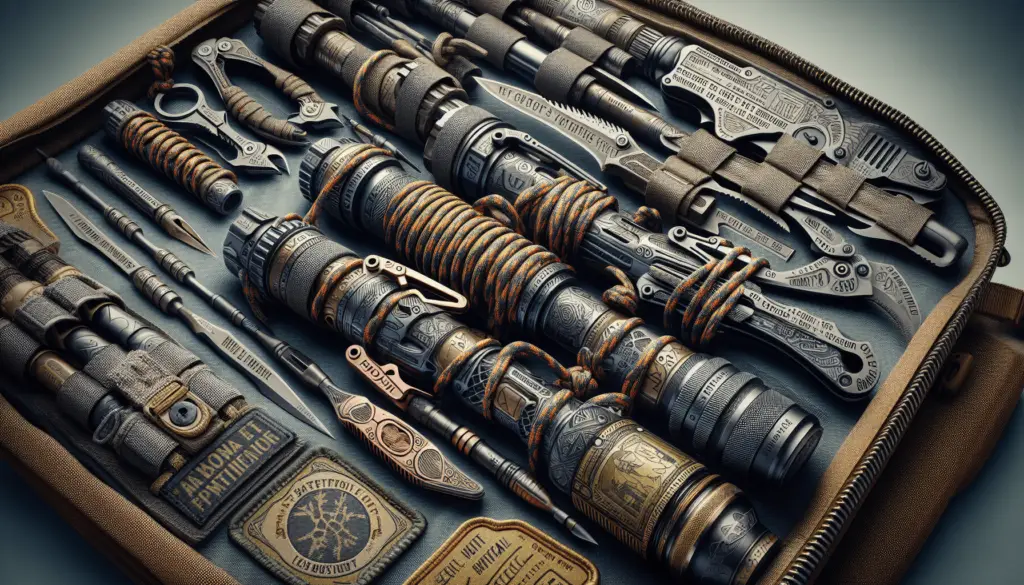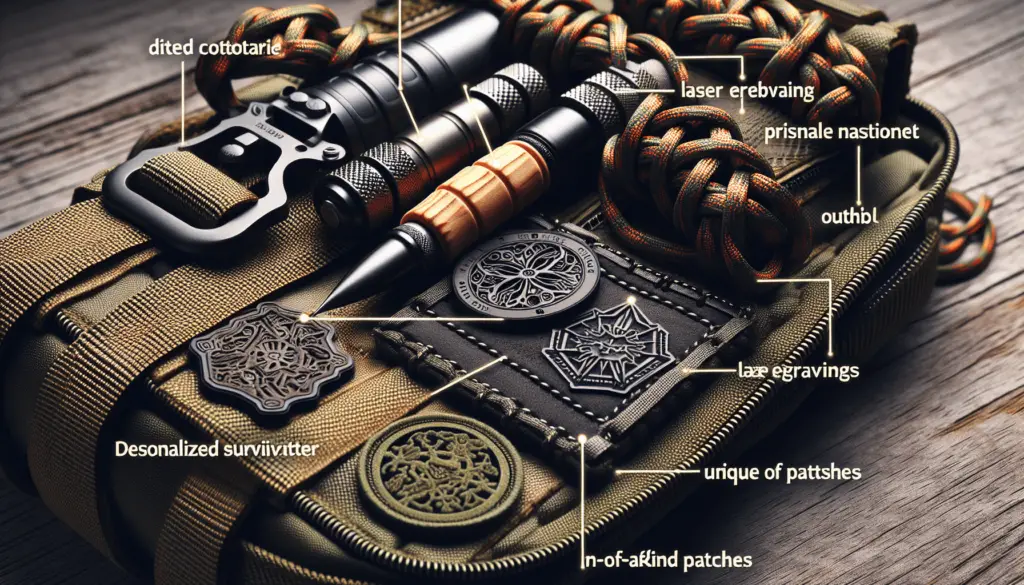The Prepper’s Guide To Customizing Your Survival Gear
If you’re someone who likes to be prepared for any situation, customizing your survival gear is essential. This guide will help you navigate the process of personalizing your gear to better suit your needs and increase your chances of surviving in an emergency.

Why Customize Your Survival Gear?
Customizing your survival gear allows you to tailor it to your specific needs and preferences. By making adjustments and additions, you can ensure that your gear is optimized for your skill level, environment, and the types of emergencies you are likely to encounter. This personalized approach can give you a sense of confidence and peace of mind in knowing that you are well-equipped for any scenario.
Assessing Your Needs
Before you start customizing your survival gear, it’s important to assess your needs and identify any gaps or weaknesses in your current setup. Consider factors such as your location, climate, and the most likely types of emergencies you may face. Make a list of the essential items you already have and note any areas that could be improved or expanded upon.
Choosing the Right Gear
When customizing your survival gear, it’s crucial to choose high-quality items that are durable, reliable, and suitable for the tasks they will be used for. Invest in gear that is versatile and multipurpose to maximize efficiency and minimize weight and space. Consider factors such as weight, size, material, and functionality when selecting gear to customize.
Basic Survival Gear Essentials
Certain items are essential for any survival kit, regardless of your specific needs or preferences. These basic essentials are the building blocks of your customized gear and should be prioritized in your setup. Some examples of essential survival gear items include:
- Water Purification: Ensure you have a reliable method of purifying water, such as a filtration system or purification tablets.
- Firestarter: Pack a reliable firestarter tool, such as matches, a lighter, or a magnesium fire starter.
- First Aid Kit: Have a well-stocked first aid kit with essential medical supplies to treat injuries and ailments.
- Navigation Tools: Include navigation tools like a map, compass, and GPS device to help you find your way in the wilderness.
- Emergency Shelter: Carry a lightweight, portable shelter such as a tent, tarp, or emergency blanket for protection from the elements.

Customizing Your Gear for Your Environment
One of the key aspects of customizing your survival gear is tailoring it to the environment you will be operating in. Consider the specific challenges and conditions of your location, such as extreme temperatures, rugged terrain, or dense vegetation. Customize your gear to address these environmental factors and increase your chances of survival.
Cold Weather Customizations
If you live in or frequent cold weather environments, customizing your gear for sub-zero temperatures is crucial. Consider adding the following items to your kit to stay warm and safe in cold weather:
- Insulated Clothing: Pack insulated clothing layers such as a winter jacket, thermal pants, and wool socks to retain body heat.
- Hand and Foot Warmers: Include disposable hand and foot warmers to keep extremities warm and prevent frostbite.
- Emergency Shelter: Carry a four-season tent or insulated sleeping bag rated for low temperatures to stay protected from the cold.
Hot Weather Customizations
For those in hot climates, customizing your gear to combat heat and dehydration is essential. Consider adding the following items to your kit to stay cool and hydrated in hot weather:
- Hydration System: Invest in a hydration pack or water bottles to stay hydrated in the heat and prevent heat-related illnesses.
- Cooling Towels: Pack cooling towels or bandanas to help regulate body temperature and stay cool in high temperatures.
- Sun Protection: Carry sunscreen, sunglasses, and a wide-brimmed hat to protect your skin and eyes from harmful UV rays.
Tailoring Your Gear to Specific Emergencies
Customize your survival gear to address the specific emergencies you are most likely to encounter based on your location, skill level, and experience. Consider the following scenarios and prepare your gear accordingly:
- Natural Disasters: Pack items like extra batteries, a whistle, and dust masks to prepare for earthquakes, hurricanes, or tornadoes.
- Wilderness Survival: Include gear for fire starting, shelter building, and signaling to prepare for getting lost or stranded in the wilderness.
- Urban Survival: Pack items like a multitool, cash, and a local map to prepare for power outages, civil unrest, or other urban emergencies.
Personalizing Your Gear for Comfort and Convenience
In addition to customizing your survival gear for functionality and preparedness, consider personalizing it for comfort and convenience. Add items that bring you comfort or convenience in a survival situation, such as a favorite snack, a deck of cards, or a book to pass the time during an emergency. These small comforts can help boost morale and reduce stress in a stressful situation.
Maintaining and Updating Your Customized Gear
Regularly review and update your customized survival gear to ensure that it remains relevant and effective for your needs. Check for expired items, damaged gear, or new technologies that could enhance your setup. Conduct regular maintenance, such as cleaning, checking for wear and tear, and reorganizing your gear to keep it in optimal condition for when you need it most.
Final Thoughts
Customizing your survival gear is a personalized and empowering process that can give you confidence and peace of mind in any emergency situation. By assessing your needs, choosing the right gear, and tailoring it to your environment and specific emergencies, you can optimize your chances of survival and be well-prepared for whatever may come your way. Remember to regularly review, update, and maintain your customized gear to ensure that it remains reliable and ready for when you need it most.
